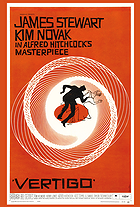Posted : 8 years, 9 months ago on 8 September 2016 02:44
(A review of
If you want to know what staring at cinematic nirvana looks like, there’s a few films I could recommend: Jean Cocteau’s Beauty and the Beast, Orson Welles’ Chimes at Midnight, Michael Powell and Emeric Pressburger’s The Red Shoes, and this warped tale of romantic obsession from Alfred Hitchcock. That the film is a never-ending bounty of self-reflexive nature, a deeply strange beast in which a multitude of readings could be engaged, is part of the strength of its enduring legacy and perverse power.
The other part is quite simple, Alfred Hitchcock was simultaneously one of cinema’s greatest entertainers, a perfectionist able to conjure one masterpiece after another, and one of its greatest experimental artists. In-between beautiful movie stars striking poses in immaculate composed frames, Hitchcock could sneak a lot of subterranean text into his works. Rear Window functions as both an explosive thriller and a deep examination of voyeurism and the movies. And then there’s Marnie, a chilly psychological thriller that also works as a master laying bare his obsessions, exposing the entrapment of the male gaze, with its leading lady rebelling against the notion of being an unwilling object of desire.
Vertigo has no shortage of strangeness to unpack, but it’s the disturbing autobiographical elements that are most fascinating. Hitchcock’s obsession with frigid blonde beauty is no secret, and the master could coax shatteringly complex and deep performances out of a number of otherwise limited love goddesses (Grace Kelly, Janet Leigh, Tippi Hedren). Much of Vertigo is concerned with one man’s obsession with a blonde specter, a woman who never existed but haunts his inflamed erotic fantasies and subsumes his waking life. The parallels to the director write themselves here, and the second half’s narrative propulsion, in which our hero transforms an earthly woman into the ghost of his blonde bombshell, feels uncomfortably close to truth. Not only for the director, but for Hollywood in general, and Novak in particular.
Many of Kim Novak’s greatest roles and performances used her perfectly ethereal, emotionally opaque persona to create tension within the narrative. Perhaps it’s inevitably a modern reading, but there was always something spectral about Novak. Knowing she walked away from Hollywood, withheld her public appearances, and forced us to only view her through her studio photo shoots and movies means she remains a captivating smokescreen. This unknowable quality makes for a perfect marriage with Hitchcock and the role, giving the actress not only the role of her career, but one of the essential performances in any Hitchcock film.
The tension in the role comes about in the second half, when the earthy Judy, Novak in a brown wig with eyebrows that look like commas that got misplaced, gets forced into a transformation. The character does this willingly, all for the love of her man, and there’s something alarmingly honest about Novak as a star in these scenes where she becomes a pliable cipher for another man’s obsessions. Cinematic sex sirens are frequently the creations of a studio, and Novak was not entirely different, with the lavender wash put in her hair, the name change, and the limited roles in which they placed her. Her rebellion against these roles fires up her best ones, like Picnic’s small town beauty who longs to be viewed for something other than her appearance, or here in which Novak basically gets to both pare down her beauty and use it as a weapon.
As fabulous as Novak is here in her dual role, without James Stewart’s career-best leading work Vertigo would flounder. Stewart was famous for his “everyman” quality, but the best directors used that quality to explore darker and desperate colors lurking underneath. Frank Capra broke him down in Mr. Smith Goes to Washington, then drives him to the edge in It’s a Wonderful Life, while Hitchcock turned him into a kinky voyeur in Rear Window. None of those darker roles prepares you for the psychodrama on display here.
Stewart drives not towards the edge of madness, but deep into its dark heart. He is Hitchcock’s more handsome proxy, exacting control of a beautiful woman, turning her into his idealized image of feminine beauty, and displaying troubling layers of obsession and fetishistic glee. Stewart’s enviable career is littered with stellar roles and performances, I’ve already listed three and didn’t even mention The Shop Around the Corner for instance, but there’s something extra special about his work in Vertigo. The way that the Stewart persona gets broken down, crushed into a fine powder, then thrown into the breeze has much to do with it. We’re a long way from the “aw, shucks” homespun goodness of his star quality, and it’s shocking just how believable and honest he makes his character engaging in mock necrophilia feel.
Vertigo often has the vague unease of an inescapable fever dream. The narrative is a long way from naturalistic, even by Hitchcock’s standards, and its obtuse nature drives its oft-kilter energy. Color-coding also goes a long way towards selling us on the uneasy themes on display here. The easiest scene to analyze if the justifiably famous nightmare sequence, where Stewart is bathed in angry, vibrant splashes of blue, red, and green.
Green in particular is a color we must pay attention to. When Stewart’s obsessed lover finishes remaking plain-jane Judy into his porcelain, withholding dream she emerges from a green light as though she were a specter taking form. Prior to this scene, Madeline was dressed in ghostly colors, all grey, white, and black, a color palette that gives her the illusion of being in monochrome in a world of bright VistaVision color. When Stewart first sees Novak’s blonde goddess it’s in a red room where she’s attired in black and green, already a haunting presence, and when she reappears as Judy she’s once more in green, but this time a plain working girl. Green takes on the symbolic heft of obsession and dreams, as this idealized woman emerges and re-emerges in it throughout.
As Vertigo swirls towards its climax, further tragedy becomes inevitable. Novak’s dual-role is a trapped victim, agreeing to play whatever role the man she loves demands of her, and Stewart’s mistaking an image for a reality, then becoming both the exacting master and entrapped participant of it. There’s no possibility for a happy romance for either of these characters, only worlds of pain. This is love as sepulchral ritual, an arresting two hours of a cinematic maestro destroying his altars and fetishes, and one of cinema’s towering, elliptical masterpieces.
 Login
Login
 Home
Home 95 Lists
95 Lists 1531 Reviews
1531 Reviews Collections
Collections
 0 comments,
0 comments, 







